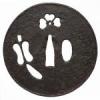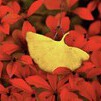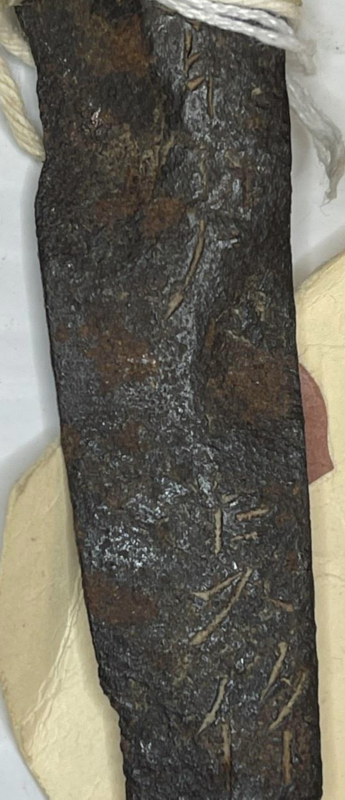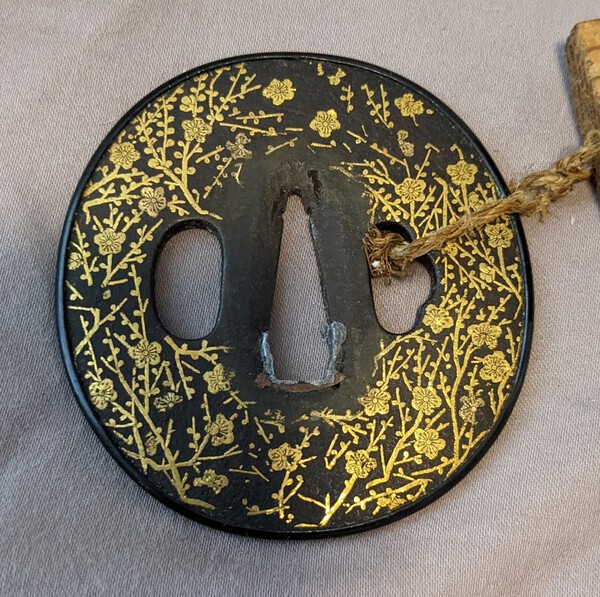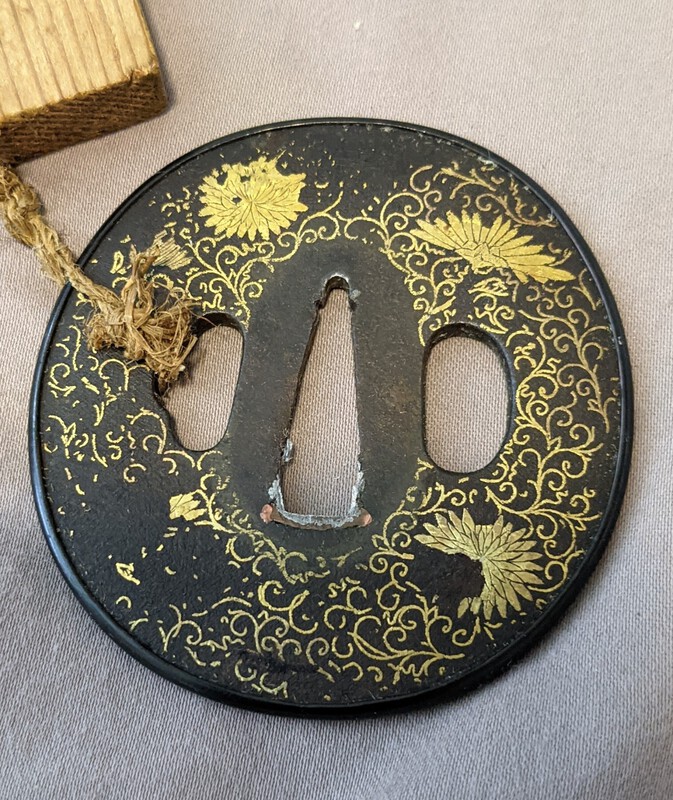
10thRoyal
Members-
Posts
31 -
Joined
-
Last visited
Profile Information
-
Gender
Male
-
Location:
Melbourne, Florida
Profile Fields
-
Name
Michael R
Recent Profile Visitors
286 profile views
10thRoyal's Achievements
-
I appreciate the quick reply Ray. There doesn't seem to be an inscription on the reverse and unfortunately I wasn't given any photos without the string in the way. The only other image I have of the nakago is still partially obscured but does not seem to show any characters above that string.
-
I'm hoping against hope, I know, but any body have the first guess what the visible character are? My first assumption is that this isn't a very old blade as much as it was a nakago that was kept wet for much longer than I've been alive. The rest of the blade isn't in polish but is nowhere near the nakago's condition. This was a recent find at a local auction so it is still on it's way to me so I've only got the images the auction house had. Best of luck to y'all. Michael
-
I was hoping this blade was going to show up on here at some point, hahaha. @BreizhSamourai I hope you post more updates as you learn more about it. Might turn into something beautiful.
-
Yanone varities and their purposes
10thRoyal replied to 10thRoyal's topic in General Nihonto Related Discussion
@Anthony de Vos your collection is stunning and truly puts mine to shame! I wasn't aware that metal yanone could be mounted on the whistling yanone. -
Yanone varities and their purposes
10thRoyal replied to 10thRoyal's topic in General Nihonto Related Discussion
Yes it is, small piece of bamboo wrapped in ray skin. The yanone is pretty well stuck in there. -
Yanone varities and their purposes
10thRoyal replied to 10thRoyal's topic in General Nihonto Related Discussion
@Bazza your friend was certainty a wealth of information and a true student of the craft, I'm sorry for his loss for the whole community. Now I've got to push the dark thoughts of yanone polishing out of my head... I wonder how he did it? -
Yanone varities and their purposes
10thRoyal replied to 10thRoyal's topic in General Nihonto Related Discussion
The #11 your referring to has six facets at the base with for facets at the blade. I think in the image it is actually sitting on one of the base facets, making it look very skinny. There are one or two of the mounted yanone that seem to be pretty exact matches. As for #5, so many bodkins look rough whether they are in the Royal Armories or on Etsy that I couldn't tell you which camp they belong in. Was it common to lacquer yanone? It looks like the mounted ones may have been coated for protection, hence much of the dark finish. -
Yanone varities and their purposes
10thRoyal replied to 10thRoyal's topic in General Nihonto Related Discussion
Well done sir! I didn't stand a chance at reading that hahaha. Looking over a couple mei examples of smiths of that line seems to make that a very likely attestation. -
Yanone varities and their purposes
10thRoyal replied to 10thRoyal's topic in General Nihonto Related Discussion
I am not entirely sure what the origin of this one is but it appears to have been brazed with copper onto a new tang? Also the construction of the tip is interesting, the edges are razor sharp but the point actually thickens to almost be blunt. And here is one I'm slightly more dubious about, at least it appears handmade so they tried hahaha. -
10thRoyal started following Yanone varities and their purposes
-
Yanone varities and their purposes
10thRoyal replied to 10thRoyal's topic in General Nihonto Related Discussion
Just received them. Ha, Brian! You were wrong about #5! It's a chopstick 🤣🤣🤣 On a more positive note, besides one or two more dubious examples the rest are very nice with a couple of them being signed, though I would be amazed if anyone could still make out the smith. And you were spot on about the bevelled edges. Here's a few more pictures. what I thought was a cone shaped yanone is actually a very tiny chisel like tip. -
I recently picked up a cigar box of yanone as well as several mounted on ya and am impressed with the sheer variety of shapes and sizes, some of which I doubt the efficacy of even if they are not of the presentation type. I have not been very satisfied by the English literature I was finding online when searching for the intended purpose of each of these shapes. Honestly I am surprised by the general lack of yanone information at all. Half of the yanone types seem to be described as "armor-piercing" yet seem to make up most of the yanone from the Edo period (I am assuming Edo period, as I would be surprised if this many survived from an older period, though I admit that this may be a false assumption). I am curious if anyone has any more in depth knowledge about the intended use of the yanone I have here. Note that I believe numbers 1 and 3 may be Qing Chinese and 5 is likely some sort of Western Bodkin arrowhead. I apologize for the poor image quality, I am still waiting for them to arrive.
-
Even with the somewhat suspect attestation, do y'all believe this blade warrants further research? The last centimeter of the kissaki is bent and the tip broken but beside that there is little wear.
-
Looking at it in a bright lights you can see faint crosshatched lines as you mentioned. These are very shallow and it does not surprise me at all that the adhesion is week. You can see these at the top of the tsuba in the image. And it has indeed been mounted as I have the wakizashi that it was mounted to. Gold damascene on Middle Eastern and Balkan sword blades that I own which were meant for hard use have a much deeper cut cross hatch pattern and have retained the gold much better even after evidence of repeated sharpenings.
-
Seems that y'all are certainly correct that this is a cast copy. I am happy to have found such a knowledge base as this site. In more positive news I believe I found a tsuba on the other end of the spectrum, though still with losses. Sometimes the Craigslist gods are kind hahaha. Any thoughts on the school this may be from?
-
That's bizarre but not surprising. It makes sense that that would happen out of a sense of convenience or simply "that's how it's done". Even if it is probably a run of the mill Muromachi blade, it's still quite pretty with a beautiful tsuba. Well worth the $100 I paid for it.



